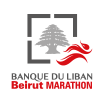In response to the previous post, Freerunner boasts that it is possible to “walk on auto pilot” on the Asian side of Istanbul. Indeed, the paths and parks along the shore from Kadıköy to Pendik are an extraordinary resource. How many cities can boast of a 40-km sea front path? (Photo above: Coastal path, Caddebostan)
Another relatively car-free path (popular with out-of-town guests) passes through the Kadıköy market on its way to Moda. (Children like to hear about the alligators of Chalcedon, and some will even drink pickle juice.)
To the north, in Üsküdar, you’ll find Validebağ (the queen-mother’s grove). Situated between the Koşuyolu neighborhood and the Altunizade Metrobus stop, Validebağ is a large park with fields, trees, paths, a café, etc.
(Photos: Validebağ)
On the European side, paths along the Golden Horn and the streets and sidewalks on either side of the Land Walls (between the Golden Horn and the Marmara Sea) are excellent places for long-distance training.
(Photo: Topkapi Gate, Land Walls)
The waterfront paths along the Marmara Sea and up the Bosphorus can be crowded, but offer spectacular views. The really ambitious and adventurous urban trekkers can start at Bilgi U.’s Santralİstanbul campus at the top of the Golden Horn and follow the Kağıthane River toward Kemerburgaz or follow the Alibeyköy River beyond Gazi Mahallesi and to the park above the Alibeyköy Reservoir.
To be honest, these last two routes are not always so pleasant – dogs can be a problem, so be prepared – but these routes take you from the heart of the city to the edge of the forest in a short 14 kilometers, with glimpses of industrial and labor history along the way.
While the number of places where Istanbullus can run/walk/roll on auto pilot may be limited, these sites do exist. The problem for pedestrians and bikers in Istanbul is that it takes a certain amount of research and planning to identify new routes.
(Photo: Merkezefendi Cemetery, Zeytinburnu)
The point, then, is to identify where the good running is to be found and think strategically about A) how these spaces (like Validebağ or the grounds of the Bakırköy Mental Hospital) can be made accessible to people with all levels of mobility, and B) how to link these spaces with a network of paths.
How much excitement could the city generate if residents and visitors alike could follow safe, wheelchair-accessible and bikable paths from the cemeteries and gardens of Merkezefendi in Zeytinburnu to Karaköy, Taksim and Kabataş in Beyoğlu? And between Kabataş to Üsküdar, why not think of a convenient solution to enable wheelchair users to board the ferries? Then resume work on pedestrian paths to attract people from Usküdar to Validebağ, then on toward Altunizade, and so on.
(Photo: Zeytinburnu Park, near Medicinal Plants Garden)
Istanbul has extraordinary waterfront paths and beautiful parks and forests where people can walk, run and roll. With a bit of determination and planning, the city could develop a network of pedestrian paths linking every neighborhood with nearby commercial centers and green spaces. Ideally, these paths, designed to ensure usability by people with varying levels of mobility, would enable bikers, wheelchair users, baby cart pushers as well as long-distance runners to set out without a moment’s hesitation to run errands, go to work, and explore the city. By incorporating pedestrian and bike paths into its transportation strategy, Istanbul can build a physical and social infrastructure that optimizes the participation of all people, regardless of physical and mental disabilities, in society and their contribution to the economy. Istanbul then would be not simply Europe’s largest and fastest growing city, but it would be its model.
(Photo: Caddebostan)



